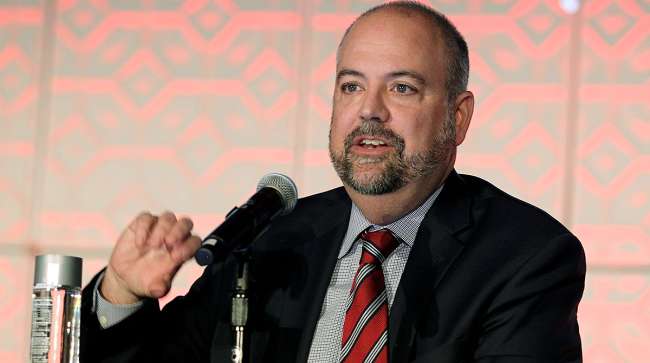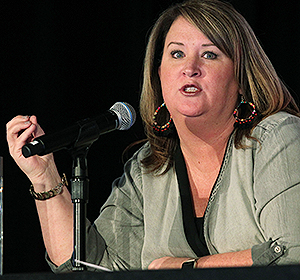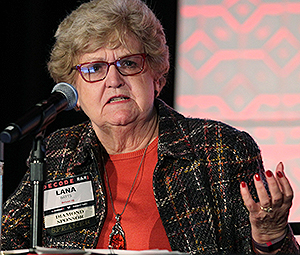Staff Reporter
ATA’s Bob Costello Predicts Slower Market Growth in 2019

NASHVILLE, Tenn.— The freight market will grow at a slower pace this year than it did in 2018, according to American Trucking Associations Chief Economist Bob Costello.
The freight market had a banner year in 2018. Truck tonnage closed out the year on a 20-year high with an annual increase of 6.6%. Costello identified tax reform and fewer regulations as the “shot in the arm” that boosted the economy in 2018.
During his remarks at the Recruitment and Retention Conference on Feb. 21, Costello indicated that stimulus would start to wear off this year. Conversion Interactive Agency, an advertising firm that specializes in recruitment, hosted the conference in conjunction with Transport Topics and ATA. He projected the freight market will sink from almost 3% annual growth to a little less than 2.5% annual growth. “The fundamentals for the freight market are good,” Costello told Transport Topics. “They’re not great like they were.”
“Without attracting those drivers, you can’t really haul any freight”-@TRUCKINGdotORG Chief Economist Bob Costello pic.twitter.com/fSp2LmPUaX
— Eleanor Lamb (@eleanorannlamb) February 21, 2019
Costello presented his analysis alongside Priscilla Peters, vice president of marketing for Conversion Interactive Agency, and Lana Batts, co-president of Driver iQ, which specializes in background screening for the trucking industry.
Recruitment is important for many firms seeking to fix the industrywide driver shortage. ATA estimates that the industry is short at least 50,000 drivers and that number is expected to climb as older drivers retire. Earlier in the day, ATA President Chris Spear said that number will double over the next five years, and stressed that the trucking industry must hire 1 million people over the next 10 years just to keep pace with economic demands.

Priscilla Peters. (John Sommers II for Transport Topics)
Batts updated conference attendees on trucking firms’ recruitment strategies during a presentation of Driver iQ’s fourth-quarter survey of customers and potential clients. Some 40% of respondents had no program to recruit veterans. About 20% of the respondents who did have such programs said the initiatives were only “somewhat effective.” Veterans who operated a truck in the military are often targeted for civilian truck-driving life because they are disciplined and accustomed to high-pressure situations.
Batts said she was surprised to find that 35% of respondents had no program to recruit women. Those that did primarily offered programs where women recruits were trained by women drivers.
“[Women are] 50% of the population [and] they’ve got no way to recruit women,” Batts said.
Peters said that online sources are valuable for drivers seeking new employment. She said that, when looking for a new carrier, drivers first turn to websites 50% of the time. Some 20% of the time, a driver’s first move is to a job board. They start with Facebook about 18% of the time. The remaining 12% of searches start with other sources, such as Instagram.
ALSO AT THE CONFERENCE: Young Drivers Discuss Industry Image, Recruitment Tips
Peters also said that, during the initial steps of recruitment, potential hires prefer to be communicated with in the same way they respond to an advertisement.
“If a driver starts questioning you via messenger on Facebook, keep that conversation going as fast as you can,” Peters said.

Lana Batts. (John Sommers II for Transport Topics)
Once the recruiting process formally begins, Peters said phone calls and texts messages are preferable. Batts reported that 51% of her survey respondents preferred phone calls, while 38% preferred communicating over text.
Peters also cautioned recruiters to answer potential hires’ questions in piecemeal fashion, rather than inundate them with information. She said the biggest mistakes she sees recruiters make is directing prospective drivers to the full applications instead of chatting with them and getting to know their needs.
“The reality is, the driver’s not quite ready for that yet,” Peters said. “You’re losing the guy.”
Establishing trust and connecting with drivers through online content are important ways for recruiters to successfully reach drivers, Peters said. She said videos especially can attract drivers to a certain carrier.
“Drivers are really engaging with carriers who are serving up good content,” Peters said. “Video is always going to be king.”




